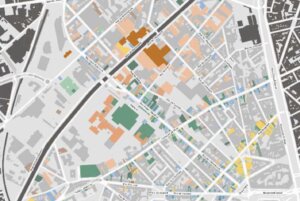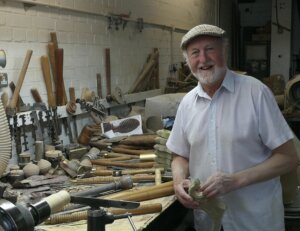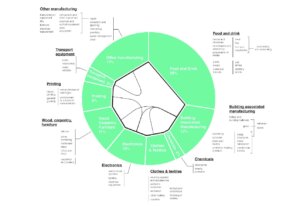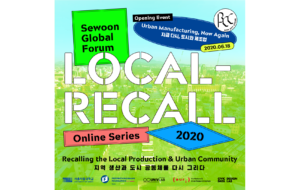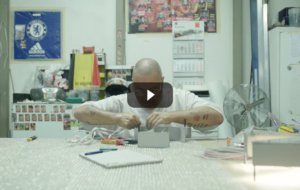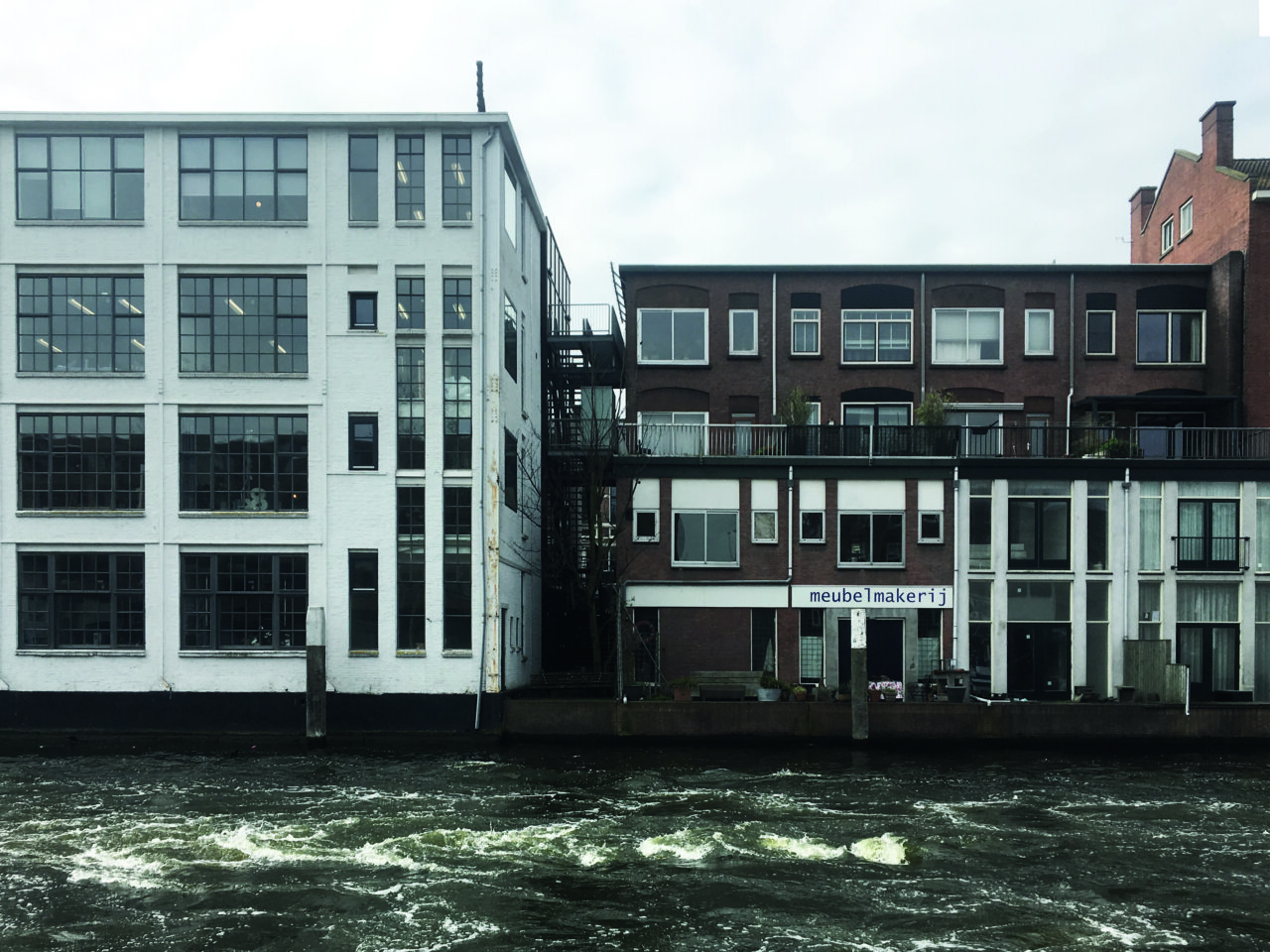
CoM policy recommendations
Photo: Victor Muñoz Sanz
Cities of Making has learnt much about the shortcoming of investment in urban manufacturing and the opportunities available for public policy to stimulate the sector. Here we present twelve points that we think most critical. These policy recommendations give cities interested in the question, but lost for action, a few hints where to start.
Based on the Cities of Making patterns, we have developed twelve action areas. There is no key priority or starting point. Some cities may already address some of these recommendations, however may not have noticed other opportunities. For policy makers interested in manufacturing, dive in where you think it will be most relevant or feasible.
The Dutch translation is available on the Gebiedsontwikkeling.nu website.
.
1 PROTECTION
Establish a suite of approaches to protect manufacturing spaces, allowing a variety of sized spaces distributed across the city.
Industrial land is rapidly disappearing or being replaced with non-manufacturing activities. Urban manufacturing needs a clear and robust protection system that supports manufacturing spaces while encouraging owners to make their spaces available to manufacturers. Clearer and stricter approaches are particularly needed to deal with real estate speculation. Furthermore, strategies must be customised to fit the context. Mixed use areas and transition zones need guidance from an area manager or curator to enforce both soft and hard development tools. The curator can help establishing a suitable mix of businesses while looking for ways to avoid real estate speculation. Furthermore, protection should not simply be limited to the manufacturing space, but also ensuring that a suitable variety of spaces are available. Protection is also required for traditional manufacturers that are important for the city but do not attract the attention of younger high-tech businesses.
Refer to patterns: R.3 Curator, R.9 Assured Security of Space, C.1 Microzoning, C.3 Balance Between Public and Private Land, C.4 Diverse Tenure Models, C.5 Varying Unit Sizes, C.9 Concentration of Noisy Making Along Infrastructure, C.10 Transition Zones, N.1 Taking Advantage of Place Conditions, N.3 Mixing Complementary Making & Related Services, N.4 Clustering Similar Making, N.9 Making Touches Making, N.10 Making Along High Streets, N.11 Back of The High Street, B.1 Making Around Courtyards, B.5 Enabling Vertical Making, P.4 Meanwhile Spaces & Transitional Uses, P.5 The Work Home.
2 FINANCING
Create investment packages to support manufacturers to be more competitive, more efficient, better integrated and more relevant to the city’s needs.
Public investment is needed to boost competitivity, support the adoption of new technologies, help companies adhere to environmental policy, gain access to space, improve production processes and to ensure manufacturing is benefitting the city. Investment can include funding research, developing buildings, creating incubation facilities or purchasing real estate, providing in-kind support for business development, offering accessible loans, providing training and so forth. Manufacturing can be mission oriented and respond to certain ambitions set at a metropolitan scale, for example waste reduction or developing excellence in bio-technology.
Refer to patterns: R.2 Transparent Making, R.6 Sustainable Product Cycles, R.10 Place-based Financial Levers, R.11 Incentives for Research & Development, C.3 Balance Between Public & Private Land, C.4 Diverse Tenure Models, N.2 Re-use of Materials & Energy Flows, N.7 Local Design & Prototyping, P.2 Shared Technology & Making Spaces, P.3 Flexible Spaces for Making, P.4 Meanwhile Spaces & Transitional Uses, P.7 Spaces for Development & Education, P.8 Community Hub in Making Locations
3 SPATIAL FRAMEWORK
Strengthen the structure or zoning plan of the urban region to regulate suitable spatial conditions for urban manufacturing.
Cities need variety: from places that are highly mixed to those areas that concentrate on a very specific activity. At a metropolitan scale, a structure plan can guide the distribution of mixed use areas across the city. Explore ways to accommodate mixed use zones and manufacturing into high streets. Protect manufacturing in fringe zones, particularly those areas protected by infrastructure or waterways, that support larger scale manufacturing and can house activities that produce odours, dust and noise. This helps by providing choice of locations to achieve the right mix of functions. The structure plan should build on existing centralities (for mixed use) and fringes (for industrial zones). New development near manufacturing areas should help increase opportunities for mixed use development and build good transition spaces towards mono-functional areas. This helps to avoid piecemeal development while strengthening a compatible mix of land uses at the right places across the city.
Refer to patterns: R.9 Assured Security of Space, C.1 Microzoning, C.5 Varying Unit Sizes, C.6 Strategic Access to Multimodal Mobility, C.7 Links to Transport Infrastructure, C.9 Concentrating Messy Making Along Infrastructure, C.10 Transition Zones, N.1 Taking Advantage of Place Conditions, N.4 Clustering Similar Making, N.6 Centralised Logistics Zone, N.9 Making Touches Making, N.10 Making Along High Streets, N.11 Back of the High Street
4 GOOD NEIGHBOURS
Design mixed use areas to avoid long-term conflicts and find complementarities between all occupants.
Industrial co-location is seen as a viable solution to pack a range of different activities into an area or even a building. Many neighbourhoods were traditionally mixed, but due to legislation (such as noise and fire) and due to developer’s business models (few developers know how to create suitable mixed use projects), co-location policies have trouble being interpreted. Buildings are designed without suitable insulation, logistics access or flexibility in the design. Furthermore, housing developers often attach retail rates to the industrial spaces, which simply makes them unaffordable for many manufacturers. These issues can be solved through supporting developers during the design process (see chapter 5), developing spaces that are useful for manufacturers, that will not create tension between the industrial and residential occupants, ensuring developers’ business models are realistic and where possible determining that a public or community facing organisation (such as a cooperative or NGO) takes ultimate control of the management of the manufacturing spaces. Mixed use areas can be complementary to all uses, allowing housing, cafés, gyms, corner shops, repair shops and others to be used by all occupants.
Refer to patterns: R.3 Curator, C.1 Microzoning, C.2 Negotiated Qualities & Environmental Criteria, C.4 Diverse Tenure Models, C.5 Varying Unit Sizes, C.9 Concentrating Messy Making Along Infrastructure, C.10 Transition Zones, N.1 Taking Advantage of Place Conditions, N.3 Complementary Making & Related Services, N.4 Clustering Similar Making, N.8 Quality Urban Environment in Making Areas, N.9 Making Touches Making, B.1 Making Around Courtyards, B.2 Yard for Logistics, B.3 Public Face, B.5 Enabling Vertical Making, B.9 Large Openings, P.1 Productive Rooftops, P.4 Meanwhile Spaces & Transitional Uses, P.5 The Work Home, P.7 Spaces for Development & Education, P.8 Community Hub in Making Locations.
5 ACCESS
Provide suitable low-carbon transport infrastructure for reliable flows of materials, personnel and goods.
For manufacturers to function effectively, they need clear and reliable supply chains and accessibility for staff, clients and partners. Manufacturers can thrive in dense inner-city areas if mobility and supply networks are available. Co-location between manufacturing and consumption activities can contribute to reduction of transport burdens. Improving air quality in cities (such as developing low-carbon zones) should consider suitable alternatives such as intermodal logistics hubs for inner-city logistics. This may require investment in current infrastructure, habilitation of water ways, introduction of electric mobility logistic networks and optimisation of logistic activities. Buildings also require sensible solutions that allow vehicles to move goods without affecting the general public.
Refer to patterns: R.6 Sustainable Product Cycles, R.7 Multi-scalar Circular Infrastructure, R.8 Moving Things Efficiently, R.10 Place-based Financial Levers, R.12 Material Database, C.6 Strategic Access to Multimodal Mobility, C.7 Links to Transport Infrastructure, C.8 Accessible Material Recovery Facilities, C.9 Concentrating Messy Making Along Infrastructure, N.1 Taking Advantage of Place Conditions, N.6 Centralised Logistics Zone, B.2 Yard for Logistics, B.5 Enabling Vertical Making, B.6 Easy Loading & Unloading, B.7 Access to Technical Networks & Services, B.8 Space for Storage.
6 SUPPORT
Nurture the role of the curator to connect actors, improve the visibility of manufacturers, identify local needs, boost innovation and create business opportunities.
Businesses are more isolated than ever, particularly well established and less conspicuous businesses that are not making hip consumer products. Manufacturers lack a clear voice and struggle to connect manufacturing to their local contexts. This role could be taken on by a bridging actor, such as a curator, a park manager, facilitator or community agent. They can perform a vast range of competencies from identifying common issues, defining infrastructure needs, perform matchmaking services, help with business development, identify new spaces for manufacturing, connect interest groups and help with the integration of manufacturing activities in communities. This role can focus on a building, a neighbourhood or cover the extent of the city.
Refer to patterns: R.1 Making Making Visible, R.2 Transparent Making, R.3 Curator, R.7 Multi-scalar Circular Infrastructure, R.10 Place-based Financial Levers, R.11 Incentives for Research & Development, R.12 Material Database, C.2 Negotiated Qualities & Environmental Criteria, C.10 Transition Zones, N.2 Re-use of Materials & Energy Flows, N.3 Mixing Complementary Making & Related Services, N.4 Clustering Similar Making, N.7 Local Design & Prototyping, N.8 Quality Urban Environment in Making Areas, N.9 Making Touches Making, B.3 Public Face, P.2 Shared Technology & Making Spaces, P.3 Flexible Spaces for Making, P.4 Meanwhile Spaces & Transitional Uses, P.8 Community Hub in Making Locations
7 EXCHANGE
Develop informal spaces for knowledge exchange and capacity building to drive mission based challenges.
Communities of manufacturers should build on collective strengths to create quality exports. Building informal relationships between manufacturers can help find complementaries and symbiosis. Connecting makers to designers, researchers, financiers and distributors can help turn ideas into products to solve problems or develop income. Community hubs can also provide platforms of exchange with the local population, providing additional visibility, hosting local capacity building and increase acceptance of working and living in proximity.
Refer to patterns: R.1 Making Making Visible, R.2 Transparent Making, R.3 Curator, R.11 Incentives for Research & Development, N.3 Mixing Complementary Making & Related Services, N.7 Local Design & Prototyping, P.2 Shared Technology & Making Spaces, P.7 Spaces for Development & Education, P.8 Community Hub in Making Locations
8 CIRCULARITY
Build resource efficient and circular manufacturing through public leadership, suitable available space, effective infrastructure, by promoting symbiotic relationships across businesses and between business and the city.
Manufacturing plays a crucial role in the transition to the circular economy to optimise resource flows, manage waste and take advantage of local materials. Manufacturers can be a vital asset for improved circularity. Industrial waste streams are a major opportunity for circularity, but manufacturers often lack the capacity, technology or space to effectively close cycles. Improved use of technology and resources can help local businesses. Yet they will unlikely have a significant impact without public support through moderating resource management and transferring the waste of one business into the feedstock of another. This requires storage, sorting yards, processing units, distribution chains and the necessary data systems to facilitate the process. Public authorities also play a key role in providing the infrastructure for the efficient use of heat produced by manufacturing processes.
Refer to patterns: R.2 Transparent Making, R.3 Curator, R.6 Sustainable Product Cycles, R.7 Multi-scalar Circular Infrastructure, R.8 Moving Things Efficiently, R.10 Place-based Financial Levers, R.11 Incentives for Research & Development, R.12 Material Database, C.1 Microzoning, C.7 Links to Transport Infrastructure, C.8 Accessible Material Recovery Facilities, C.9 Concentrating Messy Making Along Infrastructure, N.2 Re-use of Materials & Energy Flows, N.3 Mixing Complementary Making & Related Services, N.4 Clustering Similar Making, N.5 Local Collection Points of Segregated Waste, N.7 Local Design & Prototyping, B.2 Yard for Logistics, P.1 Productive Rooftops, P.6 Re-use & Repair Centres, P.8 Community Hub in Making Locations.
9 SHARED FACILITIES
Provide access to technology, space for risk-taking, incubate start-ups and nurture foundational forms of manufacturing with shared facilities.
Manufacturers, particularly foundational types of manufacturing (such as food production, construction, repair and resource management), are struggling to afford space, access high quality facilities and technology. This means established businesses are pushed to make a profit while younger businesses have limited access to the market. Furthermore, businesses are less likely to take risks, to test new products, to prototype, to push new products into the market and retain or attract talent. Public support and corporate philanthropy can facilitate access to shared resources. This can lead to clustering certain activities and strengthening local networks or makers.
Refer to patterns: R.2 Transparent Making, R.3 Curator, R.11 Incentives for Research & Development, C.1 Microzoning, N.3 Mixing Complementary Making & Related Services, N.4 Clustering Similar Making, N.7 Local Design & Prototyping, B.1 Making Around Courtyards, P.2 Shared Technology & Making Spaces, P.3 Flexible Spaces for Making, P.4 Meanwhile Spaces & Transitional Uses, P.7 Spaces for Development & Education, P.8 Community Hub in Making Locations.
10 SKILLS & KNOWLEDGE
Harness facilities for training and development of knowledge to address existing and future staffing needs.
Many businesses struggle to find suitable skilled staff that have the interest and drive to work in manufacturing. Youth are being channelled into cleaner, services oriented vocations and have less interest in technical skills or messy workplaces. Furthermore, workplaces employing new technology require hybrid skills, where workers have both technical and theoretical compentencies. Training therefore must be shaped around forward looking employment opportunities and robust career pathways. Education should offer a gateway to manufacturing and minimise any barriers of entry (sex, race, wealth or background). Training should balance the needs for staff today with the desired future for the city’s urban manufacturing in the coming decades. This may require new forms of incremental and adaptive education, whereby institutions provide basic skills and competency training which can be nourished by life-long learning tracks. Schemes supporting training on the job provide opportunities for better collaboration between city stakeholders to harness skills and capacity for the city.
Refer to patterns: R.2 Transparent Making, R.4 Availability of Diverse Jobs, R.5 Fair Work Conditions, R.10 Place-based Financial Levers, N.7 Local Design & Prototyping, P.2 Shared Technology & Making Spaces, P.6 Re-use & Repair Centres, P.7 Spaces for Development & Education, P.8 Community Hub in Making Locations
11 NETWORKS
Embed local manufacturing networks within the local economy through policy, urban planning and decision making.
Little is known about how urban manufacturers relate to their suppliers, their clients and how they depend on sources of technical expertise. Urban planning is increasingly complex and often manufacturers are affected negatively when development plans are rolled out. The impact of removing industrial land to gain space for housing or public space may only be visible many years after the initial development plans are tabled and approved. To avoid poor planning decisions and unintended consequences, source detailed information on how businesses operate, where they source materials, where staff are trained, where staff live, where waste is stored and where products are sold in order to allow for suitable evidence based decision making. By contrast, healthy manufacturing networks may need support to remain competitive or to develop new goods and services. By studying local networks, public support can benefit the aspect in most need or with greatests returns on investment.
Refer to patterns: R.1 Making Making Visible, R.2 Transparent Making, R.3 Curator, R.4 Availability of Diverse Jobs, R.5 Fair Work Conditions, R.6 Sustainable Product Cycles, R.7 Multi-scalar Circular Infrastructure, R.8 Moving Things Efficiently, R.9 Assured Security of Space, R.10 Place-based Financial Levers, R.12 Material Database, C.3 balance Between Public & Private Land, C.4 Diverse Tenure Models, C.5 Varying Unit Sizes, C.6 Strategic Access to Multimodal Mobility, C.7 Links to Transport Infrastructure, C.8 Accessible Material Recovery Facilities, N.2 Re-use of Materials & EnergyFlows, B.7 Access to Technical Networks & Services.
12 COMMUNICATION
Drive strong local communication to show the value of manufacturing.
Very few residents know what is made locally and what manufacturers do for the city. Public communication campaigns, open door days and festivals for locally made goods are excellent ways to connect manufacturers and the wider public while also helping to sustain the local economy. Such initiatives should be well founded within a larger economic vision which is also connected to research and development policies. Businesses themselves can provide greater levels of transparency by providing an insight into their products or production processes through public façades, communication material and windows connected to workshop spaces.
Refer to patterns: R.1 Making Making Visible, R.2 Transparent Making, R.3 Curator, N.7 Local Design & Prototyping, N.8 Quality Urban Environment in Making Areas, B.3 Public Face, P.2 Shared Technology & Making Spaces, P.4 Meanwhile Spaces & Transitional Uses, P.8 Community Hub in Making Locations.

